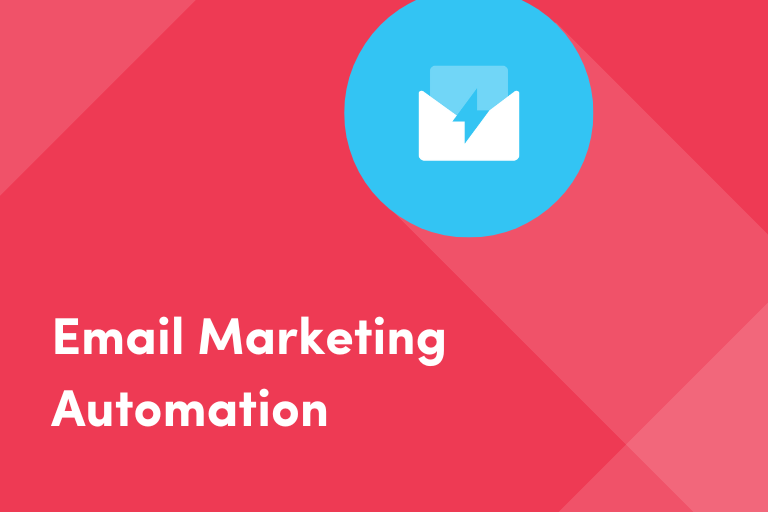Email marketing automation is a powerful business tool to streamline communication efforts, nurture leads, and drive conversions. Over the years, email marketing has evolved from simple one-off promotional emails to sophisticated, personalized communication journeys, tailored to individual customer behaviors and preferences.
With automation, marketers can set up sequences of emails triggered by specific actions subscribers take or time intervals, allowing for targeted and timely engagement with their audience. Whether you’re a small startup or a large enterprise, mastering email marketing automation can significantly enhance your marketing efforts and increase your return on investment (ROI).
This article will discuss the various aspects of email marketing automation, how to use it, its benefits, and the steps for building your own automation. Keep reading to learn more about email automation and how to set up a workflow.
- What is Email Marketing Automation?
- How to Use Automation in Email Marketing
- What Are the Benefits of Email Automation?
- How to Build Automated Email Campaigns
- Email Marketing Automation Tips
- Revolutionize Your Email Marketing
What is Email Marketing Automation?
Email marketing automation involves the automated delivery of tailored and individualized emails to subscribers or customers triggered by predefined actions, events, or timing parameters.
Automated email marketing allows marketers to create dynamic and highly relevant campaigns that engage recipients at the right moment with the right content, enhancing the customer experience, driving conversions, and improving the effectiveness of their email marketing.
Simply put, email marketing automation allows marketers to set up sequences of emails that are automatically sent to subscribers based on specific criteria or user interactions. These criteria can include signing up for a newsletter, making a purchase, abandoning a shopping cart, clicking on a particular link, and more.
How to Use Automation in Email Marketing
So, what can you do with email marketing automation? Here are several ways you can use it in your marketing strategy:
- Abandoned cart reminders: Abandoned cart emails are triggered when customers add items to their cart but fail to complete the purchase. Automation allows you to send timely reminders to encourage them to return and complete their transaction. These dynamic emails often include details of the items left in the cart, compelling visuals, and a clear call-to-action (CTA) to prompt the customer to revisit the website and finalize their purchase.
- Re-engagement campaigns: Over time, subscribers may become disengaged or inactive. Re-engagement campaigns can help rekindle their interest and bring them back into the fold. Automated emails may offer incentives, exclusive promotions, or valuable content to reignite their interest and encourage them to interact with your brand again after a set period of no or little interaction.
- Onboarding workflows: Onboarding workflows are automated communications that introduce new subscribers to your business, set expectations, and guide them through onboarding. Automated emails, for example, could be triggered when someone subscribes to your email list.
- Drip campaigns: Drip campaigns can use automated emails to nurture leads, guiding them through the sales funnel over time. By segmenting your audience based on their interests, behaviors, or demographics, you can use automation to deliver targeted content and offers at each stage of their journey.
What are the Benefits of Email Automation?
While one-off promotional emails can be effective at delivering specific messages or offers to your audience, email automation offers several distinct advantages. By automating your email marketing efforts, you can achieve greater efficiency, consistency, and personalization in your marketing strategy. Here’s a breakdown of some key advantages of automating emails:
- Increase efficiency: Automation eliminates manual tasks associated with email marketing, such as individually crafting and sending emails, managing subscriber lists, and tracking campaign performance. Automating these repetitive processes can save time, reduce workload, and focus your efforts on more strategic activities.
- Enhance customer experiences: Automation allows for highly targeted and personalized communication with subscribers, delivering content and promotions based on data like their interests, behaviors, and preferences. By sending timely and tailored emails, you can provide a more engaging and seamless experience, fostering stronger customer relationships.
- Drive engagement: You can trigger automated emails based on specific subscriber actions or events, such as website visits, purchases, or form submissions. By delivering relevant content at the right moment, automation helps keep subscribers engaged with your brand, encouraging them to take the desired actions.
- Minimize errors: Automation reduces the risk of human error associated with manual email marketing processes, such as typos, incorrect segmentation, or missed deadlines. With predefined workflows and automated quality checks, you can ensure emails are sent accurately and consistently.
- Optimize resource management: By automating routine tasks and workflows, you can make better use of your resources, including time and budget. Email marketing automation allows you to achieve more with less to scale your marketing efforts without significantly increasing overhead costs or administrative burdens.
How to Build Automated Email Campaigns
Building automated campaigns requires you to have email marketing automation software that lets you create workflows, segment your audience, personalize content, and schedule emails.. Once you’re ready to begin, here’s how to build an automated email campaign:
- Establish the goals of your campaign: Clearly define the objectives you want to achieve with your automated email campaign. Whether it’s increasing sales, nurturing leads, driving website traffic, or improving customer retention, having specific goals will guide your email marketing strategy.
- Choose the right email automation software: Select an email automation platform that aligns with your needs, budget, and technical requirements. Look for features like workflow automation, audience segmentation capabilities, testing, analytics, and integration with other tools or platforms.
- Segment your email list: Separate your email list into segments based on criteria such as demographics, behaviors, purchase history, or engagement levels. Segmentation lets you deliver more targeted and personalized content to different groups of subscribers, increasing relevance and effectiveness.
- Build your workflows: Map out the customer journey and create automated workflows that guide subscribers through various stages of the campaign. Define triggers and actions that will initiate each email sequence, such as sign-ups, purchases, or specific interactions with your website or content.
- Create your content: Develop compelling dynamic content for each email in your automated campaign. Tailor your messaging to resonate with your target audience’s needs, interests, and preferences. Use persuasive copywriting, eye-catching visuals, and clear CTAs to drive engagement and conversions.
- Test and send: Conduct thorough testing before launching your automated email campaigns to ensure everything works as intended. Test for email rendering across different devices and email clients, check for broken links and formatting issues, and review the automation workflow for any errors or gaps. You can also use seed testing to ensure your email reaches subscribers’ inboxes. Once confident in your campaign setup, you can schedule or activate your automated emails.
Email Marketing Automation Tips
While email automation offers immense potential for driving engagement and conversions, its effectiveness depends on your strategic implementation of best practices. Whether you’re a seasoned marketer or a newcomer, using these tips can help you through the process of setting up your email marketing automation campaigns:
- Optimize your mobile content: With most email opens now happening on smartphones, it’s crucial to ensure that your emails are optimized for mobile. Your emails should look good and be easily read on smartphones and tablets. Consider factors like font size, image size, and button placement.
- Refine with A/B testing: A/B testing lets you compare two versions of an email to see which one performs better. You can test elements like subject lines, sender names, email copy, CTAs, or design elements to determine what resonates best with your audience.
- Track your results: Tracking and analyzing metrics is the only way to know how well your emails performed. Keep a close eye on email marketing KPIs like open rates, click-through rates, conversions, deliverability metrics, and unsubscribe rates to measure campaign performance.
- Follow all email marketing laws: Compliance with email marketing laws and regulations is non-negotiable. Make sure you’re familiar with and adhere to laws such as GDPR and CAN-SPAM. This means getting explicit consent from subscribers, providing clear opt-out mechanisms, including your physical address in emails, and honoring unsubscribe requests.
Revolutionize Your Email Marketing
With the right tools and best practices, you can use email marketing automation to streamline communication efforts, nurture leads, and drive conversions at scale. By embracing automation, you can deliver timely, personalized messages that speak to your audience, maximizing engagement.
Iterable is a cross-channel marketing platform with email marketing automation that empowers marketers to create, deploy, and optimize automated campaigns. With workflow automation, advanced segmentation capabilities, and robust analytics, Iterable provides everything you need to build and execute successful email—and cross-channel—campaigns.
To learn more about how Iterable can help you execute email marketing automation, schedule a demo today.
| Want to take your deliverability to the next level? Download Email Deliverability 101: How to Reach the Inbox Every Time—your complete guide to building trust, boosting engagement, and ensuring your messages land where they belong. |

































